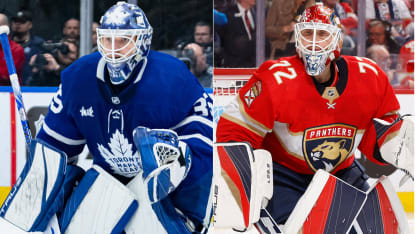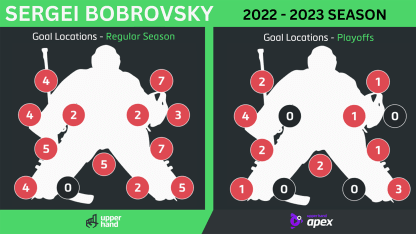Goaltending is an integral part of the Stanley Cup Playoffs. To better understand the strengths and weaknesses of each goalie, NHL.com charted the last 50 goals allowed for each goaltender in the regular season and every goal in the playoffs, with the help of Apex Video Analysis and Save Review System from Upper Hand Inc., to see what patterns emerge.
Samsonov vs. Bobrovsky goalie matchup in Eastern 2nd Round
Maple Leafs goalie must avoid rebounds, Panthers veteran needs to stop 1-timers




















